“I Love Spiti” – A Campaign to Save Spiti Valley from Single Use Plastic.
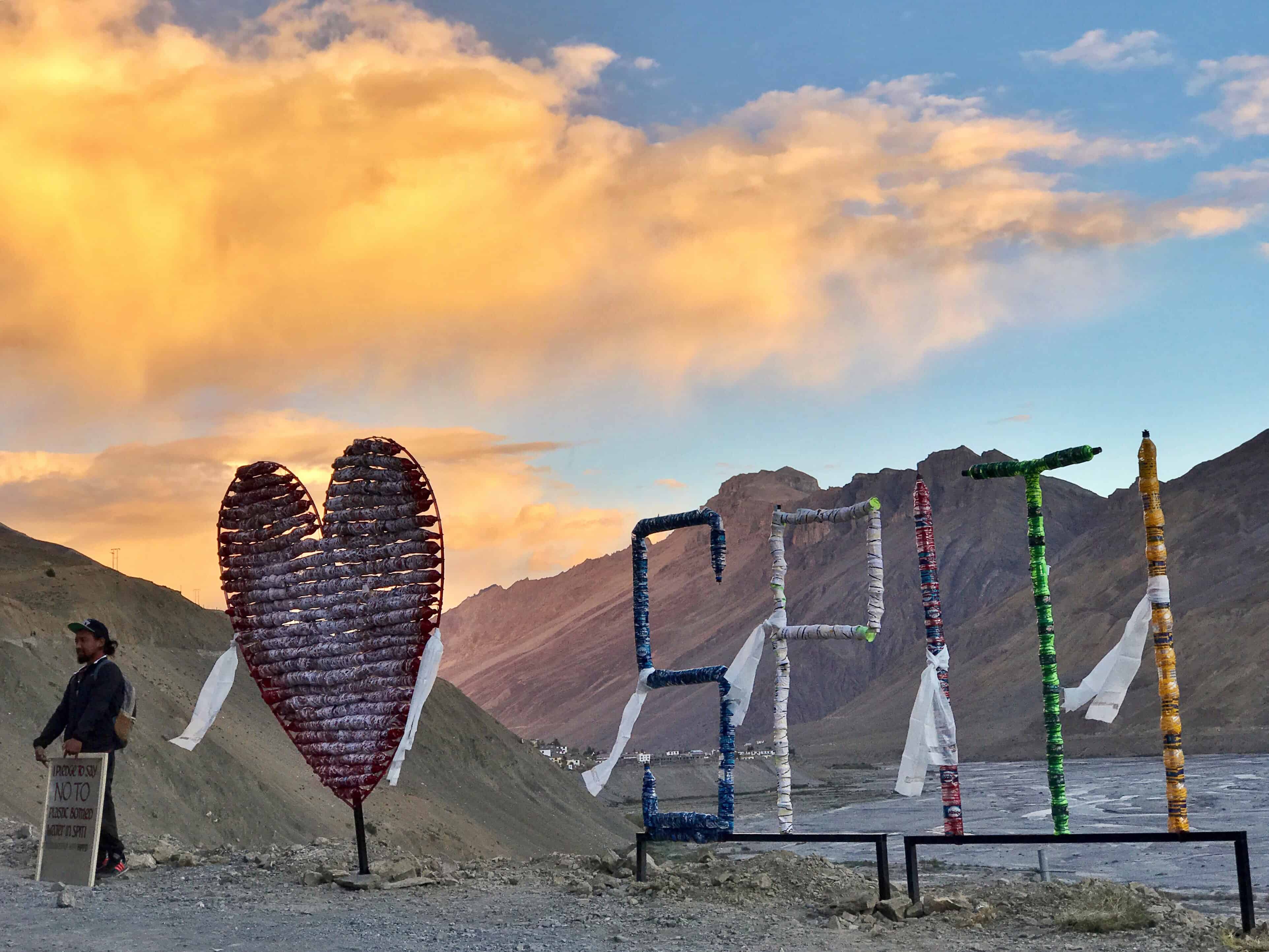
Join my collaboration with Spiti Ecosphere to create awareness and alternatives, and save Spiti Valley from single use plastic.
Six years ago, I set out on my first solo trip in India. The destination was a barren, high altitude mountain desert in the Trans-Himalayas. My mission was to volunteer and learn about sustainable tourism in India.
That trip changed my life.
One week after that trip, I resigned from my full-time desk-based job in Singapore, and started charting out a different path in life.
The destination was Spiti and the organisation I volunteered with was Spiti Ecosphere.
Also read: Can We Reduce Single Use Plastic During the Pandemic?
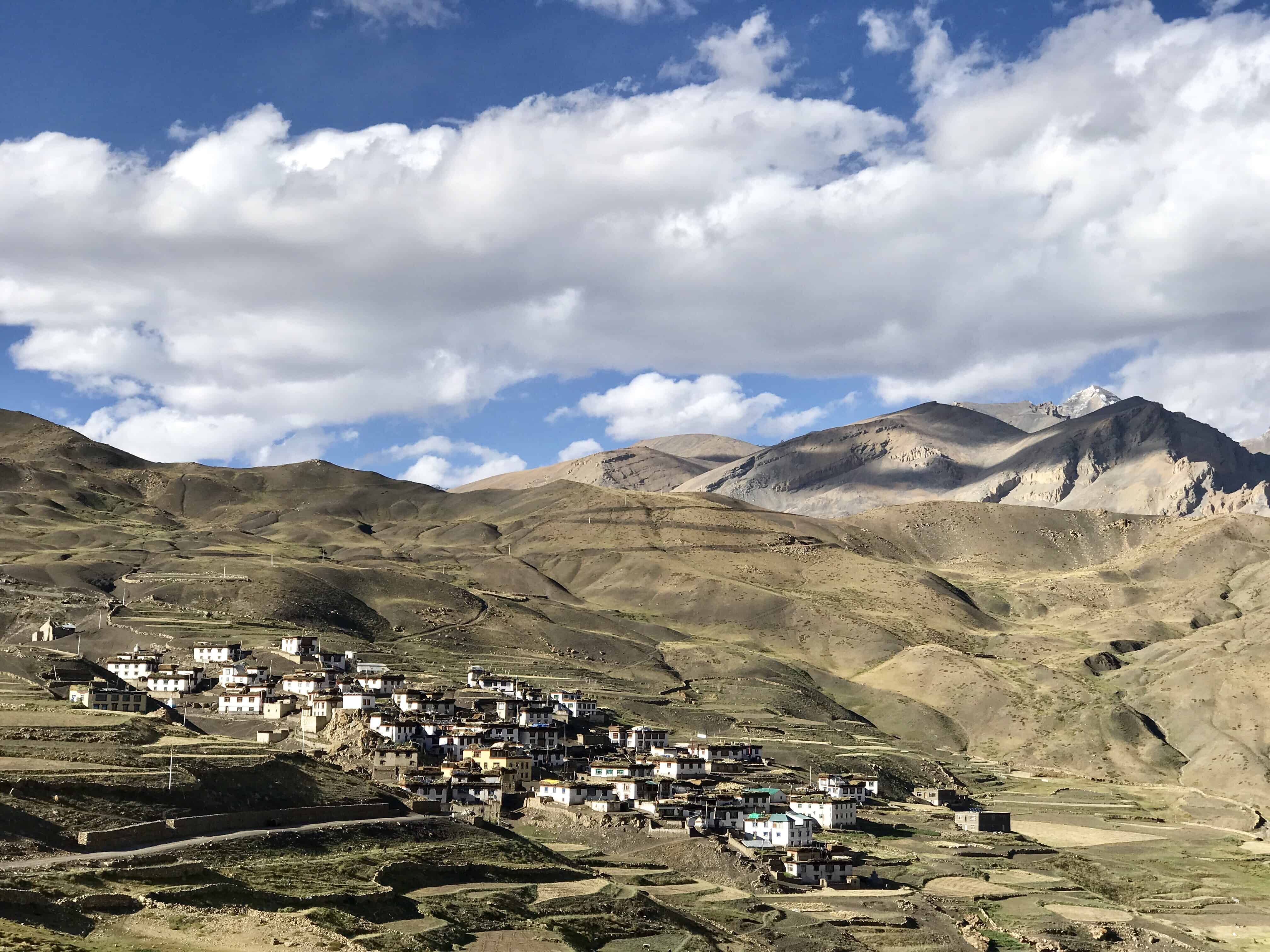
- Back to Spiti Valley after 6 years!
- Shocking facts about plastic bottled water in Spiti Valley
- A campaign to save Spiti Valley from single use plastic
- The “I Love Spiti” installation
- The World’s Highest InstaMeet at 12,000+ feet in Kaza
- How you can help as a traveller visiting Spiti Valley
- 2018 Update: LifeStraw supports the I Love Spiti campaign
- 2019 Update: Public refill points across Spiti Valley
- Do you use plastic bottled water when you travel? What alternatives have you found? Any bright ideas to take the “I Love Spiti” campaign to the next level?
Back to Spiti Valley after 6 years!
Six years later, in August this year, when I finally decided to go back, it felt like life had come full circle. I had only one agenda in mind. To give back in what little way I could, to the place that changed how I perceive local communities, travel choices and my own beliefs.
My decision to return was sparked by a conversation with Ishita – the founder of Spiti Ecosphere. She lamented how much Spiti Valley has changed over the years, and the dire need to raise more awareness about responsible travel in Spiti.
I nearly cried when the shared taxi deposited us in Kaza, the administrative capital of Spiti. The town that I remembered with only a couple of shops and guesthouses, a handful of travellers, and nothing but the barren mountains all around, has changed beyond recognition. Taken over by chaotic concrete construction and shops and tourists.
The issues this environmentally-sensitive Himalayan region is dealing with are too many to summarise in one post. However, in collaboration with Spiti Ecosphere, astro-photographer Saurabh Narang, artist Michael Hickenberg, Instagrammer Aakash Ranison and fellow travellers passing through Spiti, we decided to focus on one big issue: plastic bottles.
Also read: Things to do in Spiti Valley That’ll Take Your Breath Away
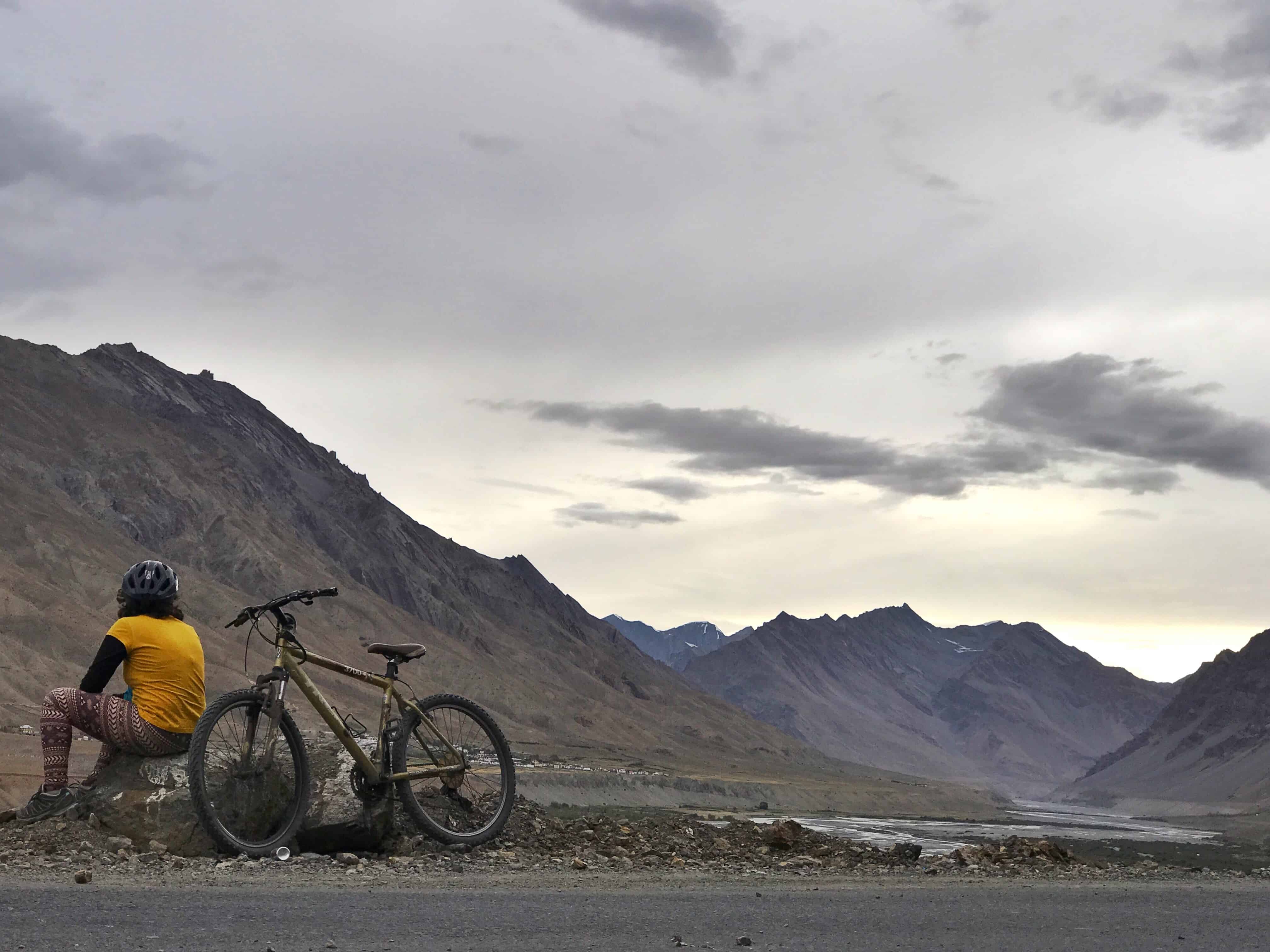
Shocking facts about plastic bottled water in Spiti Valley
- Based on a very conservative number of tourist arrivals, we estimated that 3,00,000+ plastic bottles are dumped in Spiti every season.
- Imagine the irony of drinking bottled “Himalayan” water packaged in the plains and transported to the Himalayas, instead of drinking real (filtered) Himalayan water in Spiti!
- On the arduous journey from the plains, usually Punjab, to Spiti, the exposure to heat often causes bottles to leach BPA (Bisphenol A) – a chemical known to cause cancer – into the bottled water.
- Bottled water is known to have less oxygen than groundwater, and in a high altitude region like Spiti, you need all the oxygen you can get.
- Even if discarded bottles are thrown in a dustbin, they typically end up in a dumping ground adjacent to the Spiti River. They take a minimum of 500 years to degrade, but no one knows exactly how long yet.
- If reused by locals, these one-time use bottles leach harmful chemicals into the liquids stored in the bottle. The nearest recycling centre is ~500 kilometres away in Punjab.
- If burnt or buried, the bottles release harmful chemicals into the air, groundwater or soil, ultimately landing in the local food or water. These chemicals are known to cause cancer, heart disease, hormonal imbalance and other serious ailments.
Also read: Plastic-Free Living: 5 Steps to Embrace Single Use Plastic Alternatives
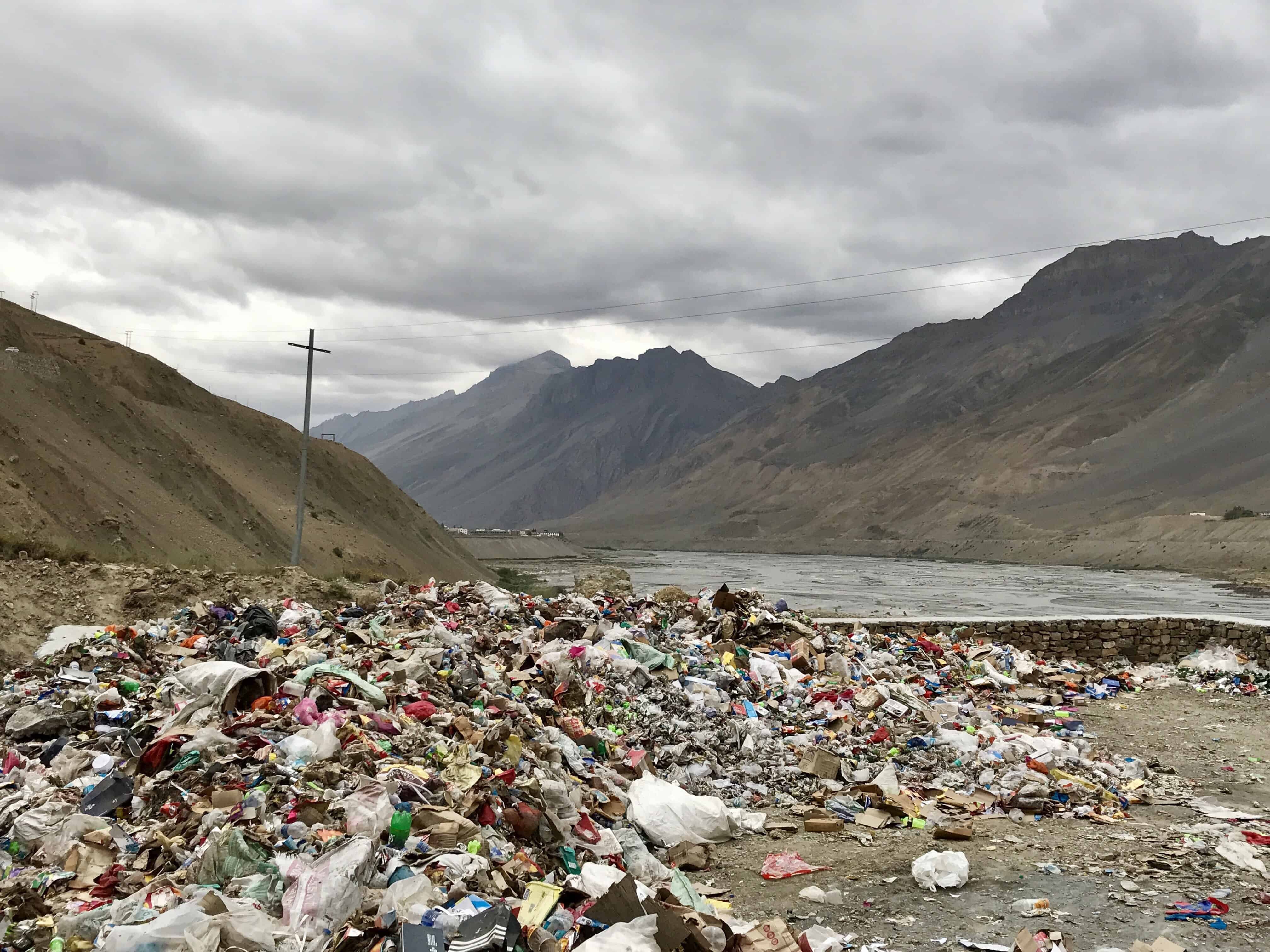
A campaign to save Spiti Valley from single use plastic
To discourage the use of plastic bottles, we worked on three levels:
Local businesses in Spiti
Without safe alternatives to bottled water, it would be impossible to discourage their usage. So we began the conversation with hotels, restaurants and cafes across Kaza to install water filters and sell BPA-free water bottles that can be reused, as well as bottles fitted with a filter, like LifeStraw.
Ecosphere then worked on mapping out all water refilling stations across the valley. See my 2019 updates at the end of the post and save the map!
Local community in Spiti
Turns out, most locals in Spiti have been reusing plastic water or fizzy drink bottles to store milk, araakh (the local liquor) and water.
In a meeting with Kaza’s women’s self-help group, we shared studies that reveal how harmful chemicals leech from the bottles into the liquids over time. In a live demonstration, we showcased what happens to an empty bottle exposed briefly to the heat of a candle. Try it yourself, to see how it melts and fumes.
Pregnancy and heart problems, cancer and other diseases are on the rise in rural Spiti, and this could well be a contributing reason. The alternative for locals is simple – stainless steel containers to store liquids, available locally.
Travellers visiting Spiti (and the Himalayas in general)
Lack of awareness among travellers visiting Spiti – about the health / environmental damage caused by plastic bottled water – results in 3,00,000+ bottles dumped on the riverbed every season!
That number will only grow with the surge of tourism. So we came up with an idea…
Also read: My Hitch-hiking Adventures in Spiti Valley
The “I Love Spiti” installation
The idea occurred to me on the shared taxi ride from Manali to Spiti. We were awaiting our turn as each vehicle ahead of us tried to manoeuvre the stream flowing past the road.
Outside, I could see mounds of trash along the river bed. Just then, a fellow passenger opened a candy bar and threw the plastic wrapper right out of the window! It angered me and some of my other co-passengers, and we started explaining to him why he should keep his trash in his pocket till he finds a dustbin.
“If you keep throwing wrappers like this, there’ll be no mountains left. All we’ll have are mountains of plastic,” I said. And as I told him that, it struck me that we should create exactly that – an artwork of a mountain of plastic to illustrate what we are doing to our mountains.
The artwork idea emerged into a lifesize “I Love Spiti” installation after a discussion with Spiti Ecosphere.
All around the world, people take photographs with “I Love New York” and “I Love Amsterdam”. We decided to join the bandwagon, except that our “I Love Spiti” is made entirely of discarded plastic bottles, that we gathered from across Kaza and even retrieved from the dumping ground!
The heart alone is made of 300+ bottles, and everyone who takes a photo with the installation pledges to say no to plastic bottled water, atleast while in Spiti Valley.
Also read: Sustainable Living Ideas to Embrace as we Emerge Into a New “Normal”
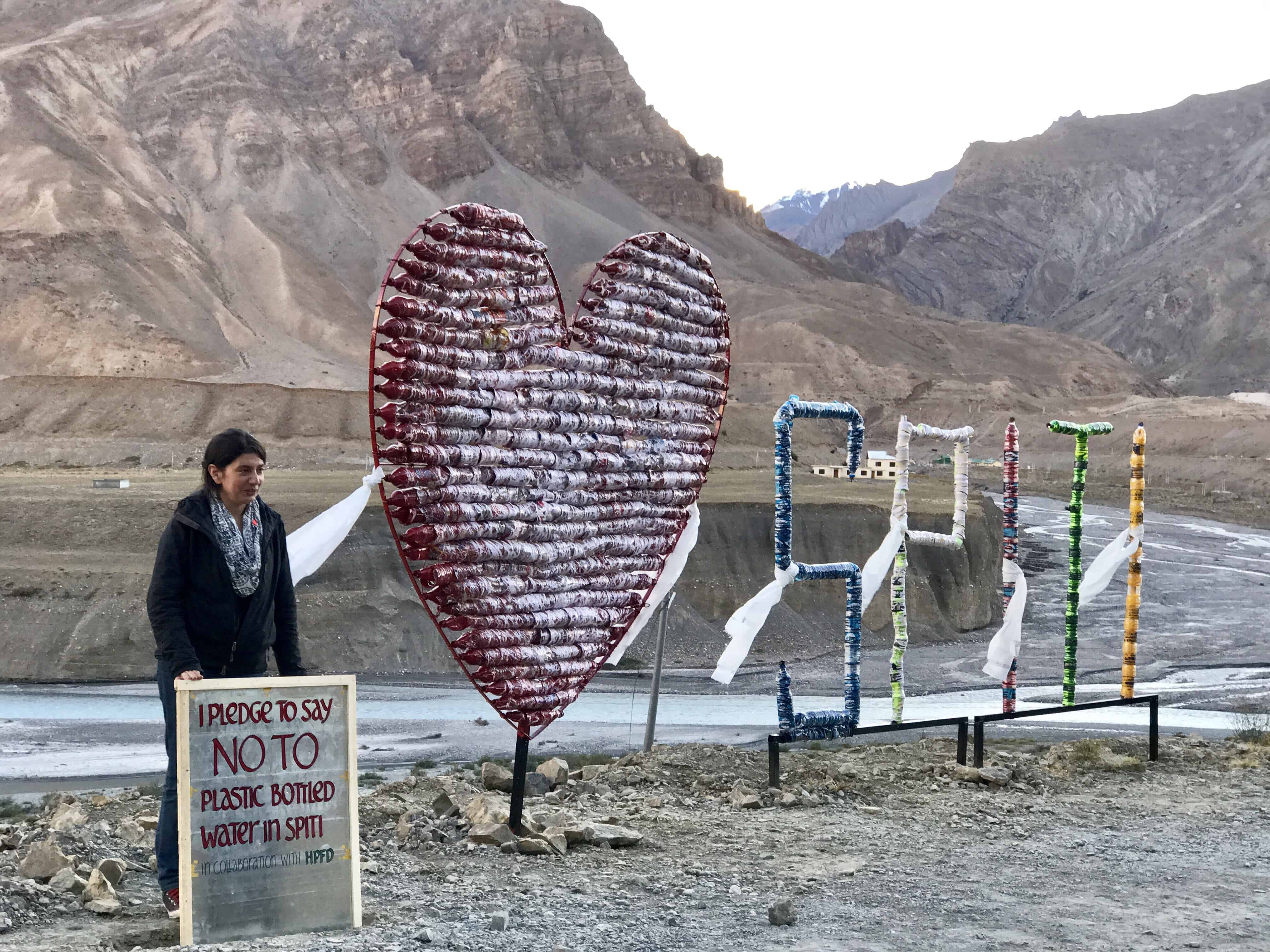
Michael Hickenberg, an artist from Australia, played an integral role in shaping the installation. It is an amalgamation of the creativity, sweat and physical hardwork of locals and fellow travellers, many of who just happened to see us work on it while passing through Kaza! In 2019, Michael dismantled and reinstalled a different design of the I Love Spiti installation.
The installation can be found near the Kaza gate (near Rangrik Bridge, on the way to/from Kee Monastery). We strategically chose this location for maximum exposure, but also because it overlooks the dumping ground next to the Spiti River.
Also read: How Volunteering in Spiti Led Me to an Unexpected Friendship
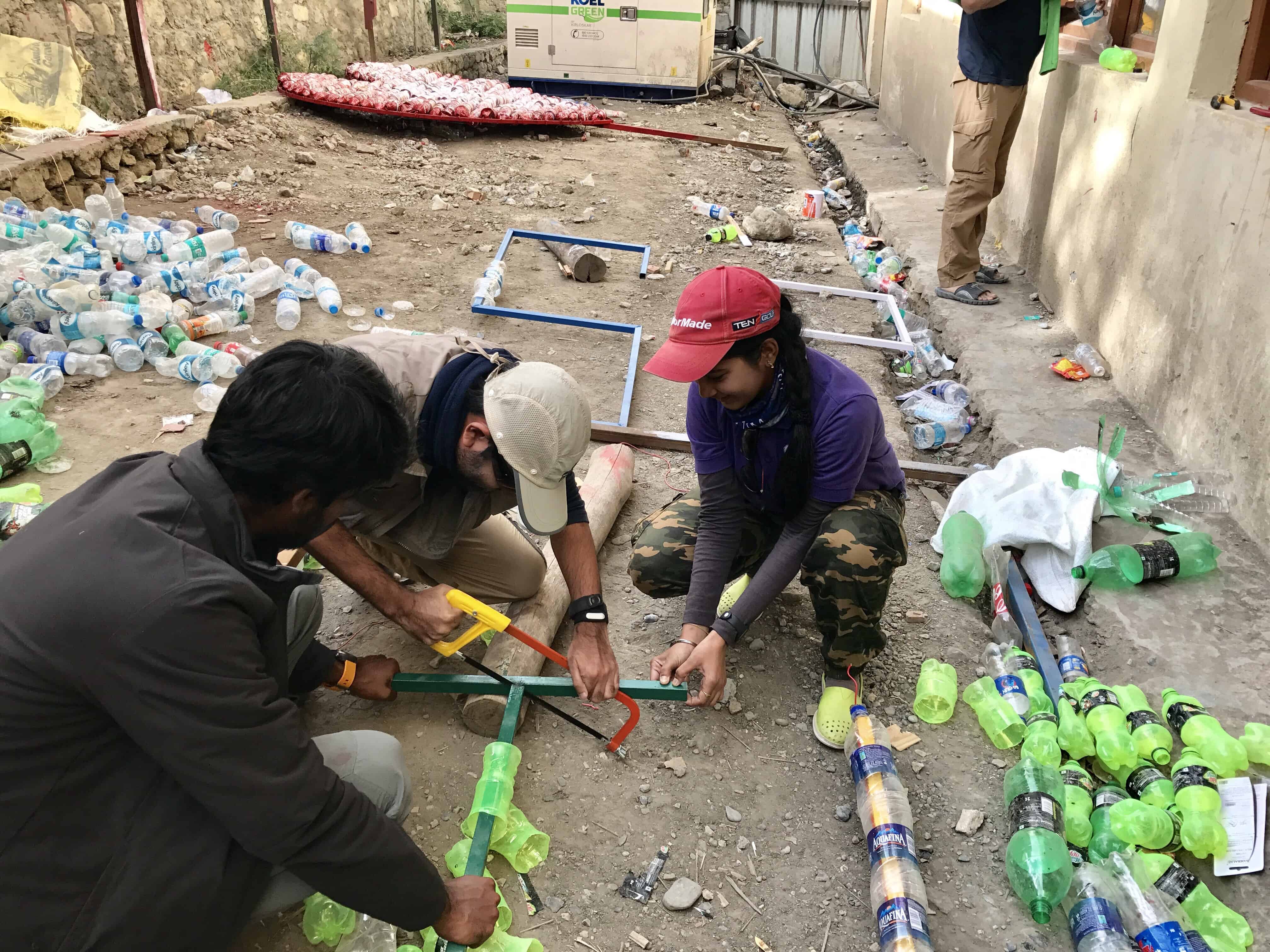
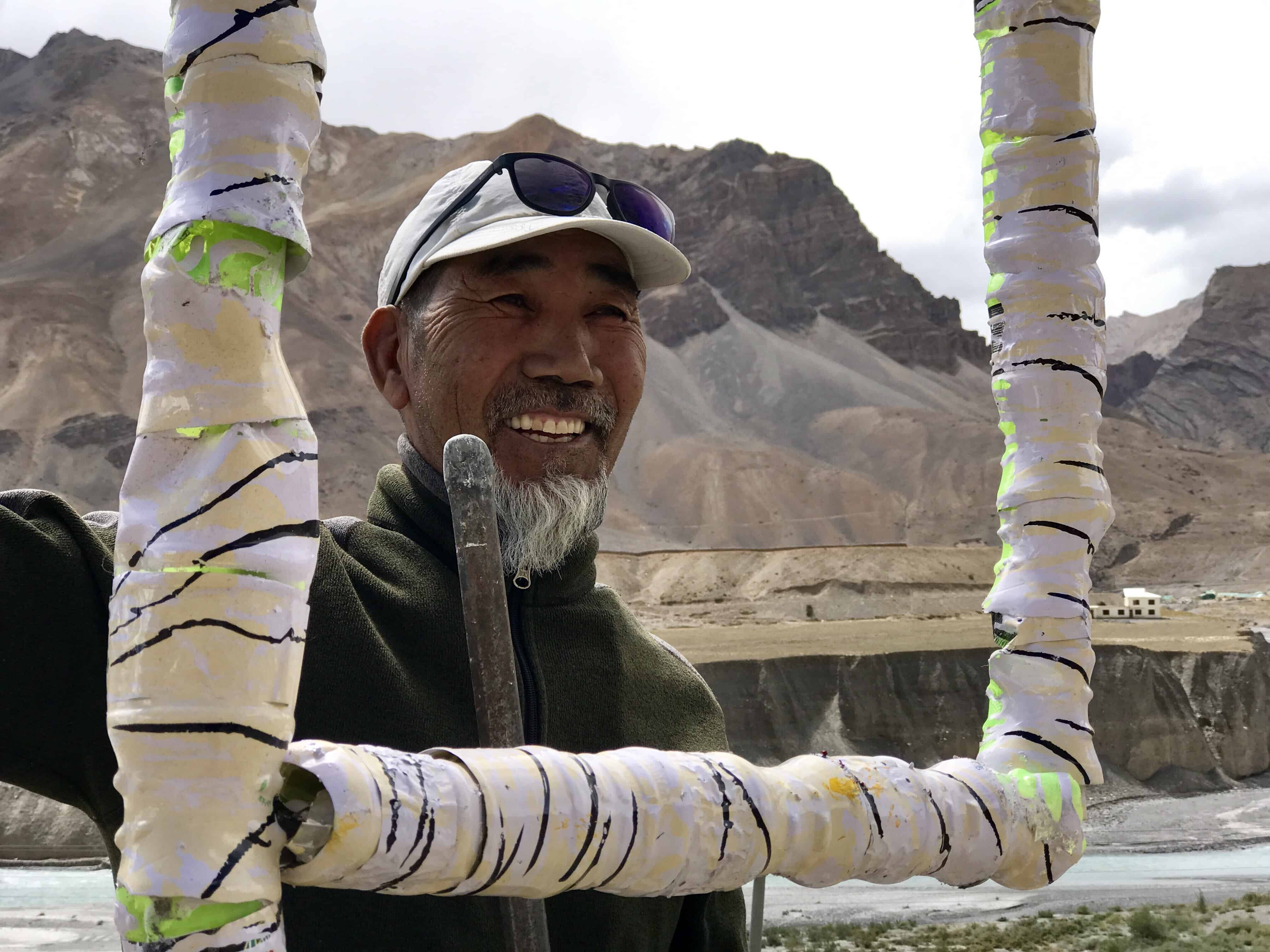
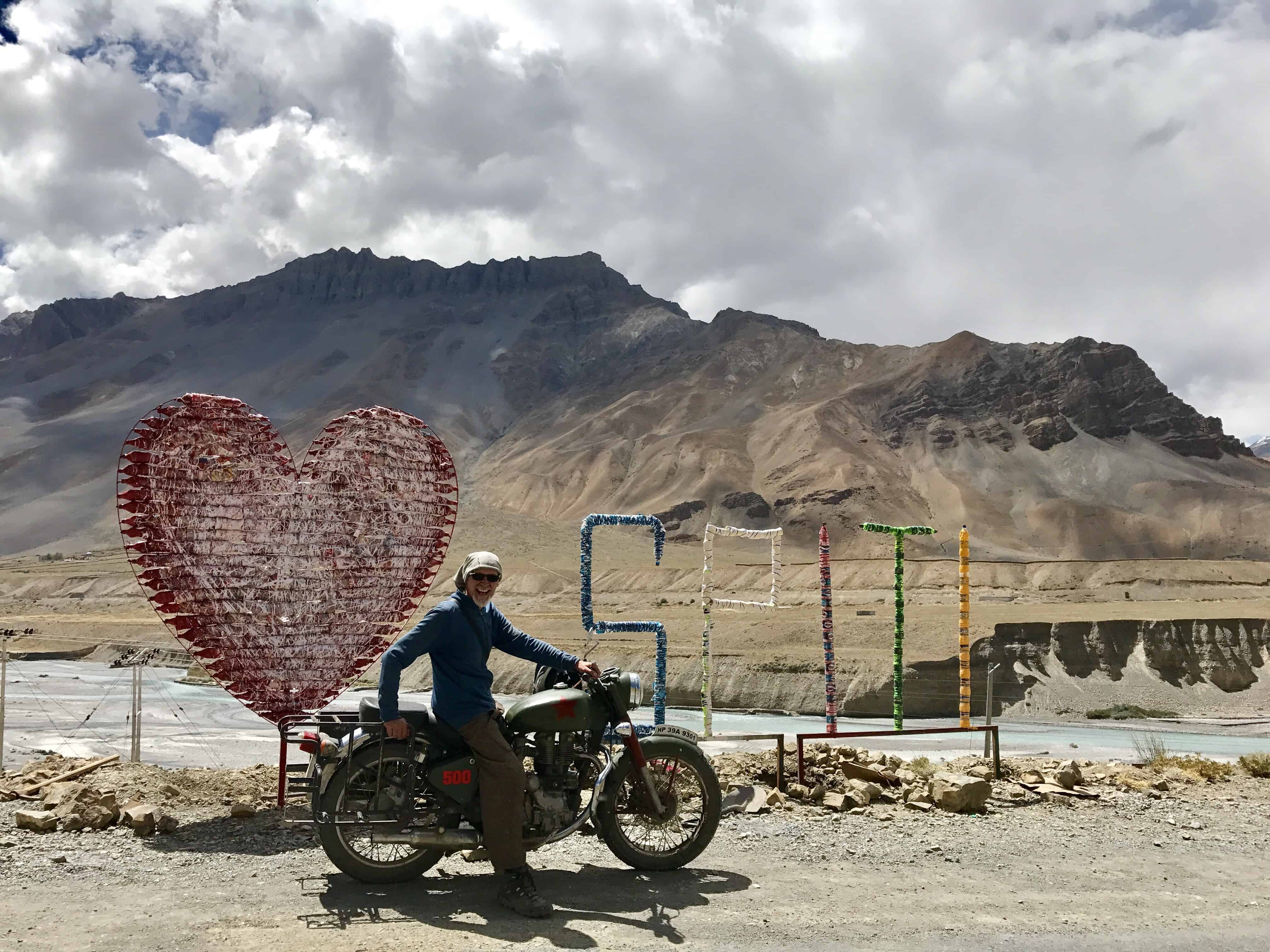
The World’s Highest InstaMeet at 12,000+ feet in Kaza
When I heard that the Worldwide InstaMeet was taking place from 8th to 10th September, I knew right away that we had to do one in Kaza. It was most likely the highest InstaMeet in the world – and my first one as a host.
Even at 12,000+ feet in this remote Himalayan town, we had a roomful of locals and travellers, and a thought-provoking discussion around responsible travel and how to eliminate plastic bottled water from Spiti.
At the InstaMeet, my fellow traveller and photographer Saurabh showcased a video he shot around Kaza, interviewing locals on how the town has changed, and travellers on the use of plastic bottles. Then we piled into the cars / camper trucks of locals, headed down to the installation spot and had the King of Spiti (yes!) unveil it.
Also read: 15 Responsible Travel Tips for Authentic, Meaningful Experiences on the Road
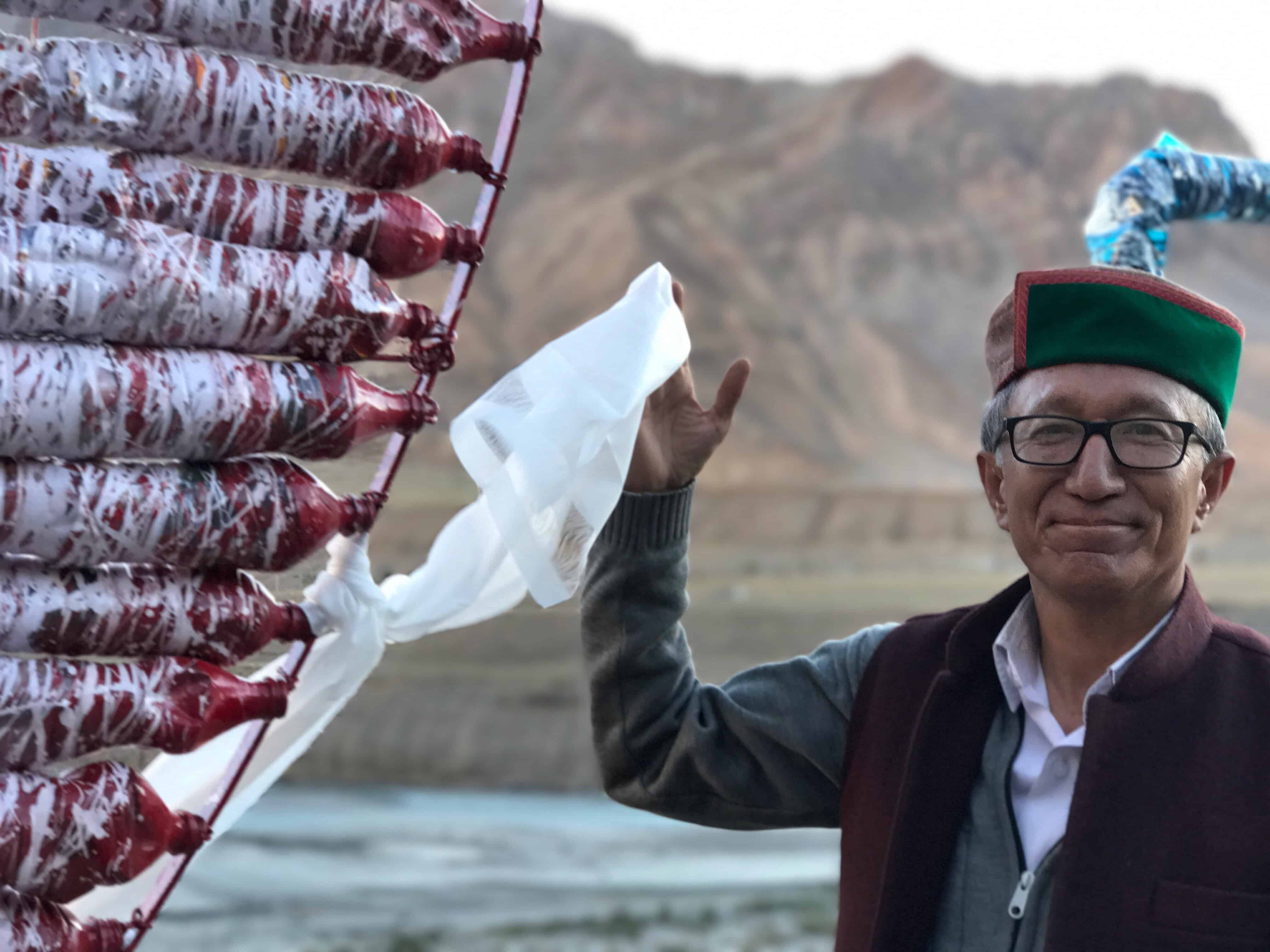
It so happened that the local politician and his convoy were driving past as we were photographing the installation, and they stopped by to pledge off plastic bottles themselves! How often do you get to say that your InstaMeet was crashed by a local politician? 😉
Also read: An Unexpected Introduction to Spiti Travel
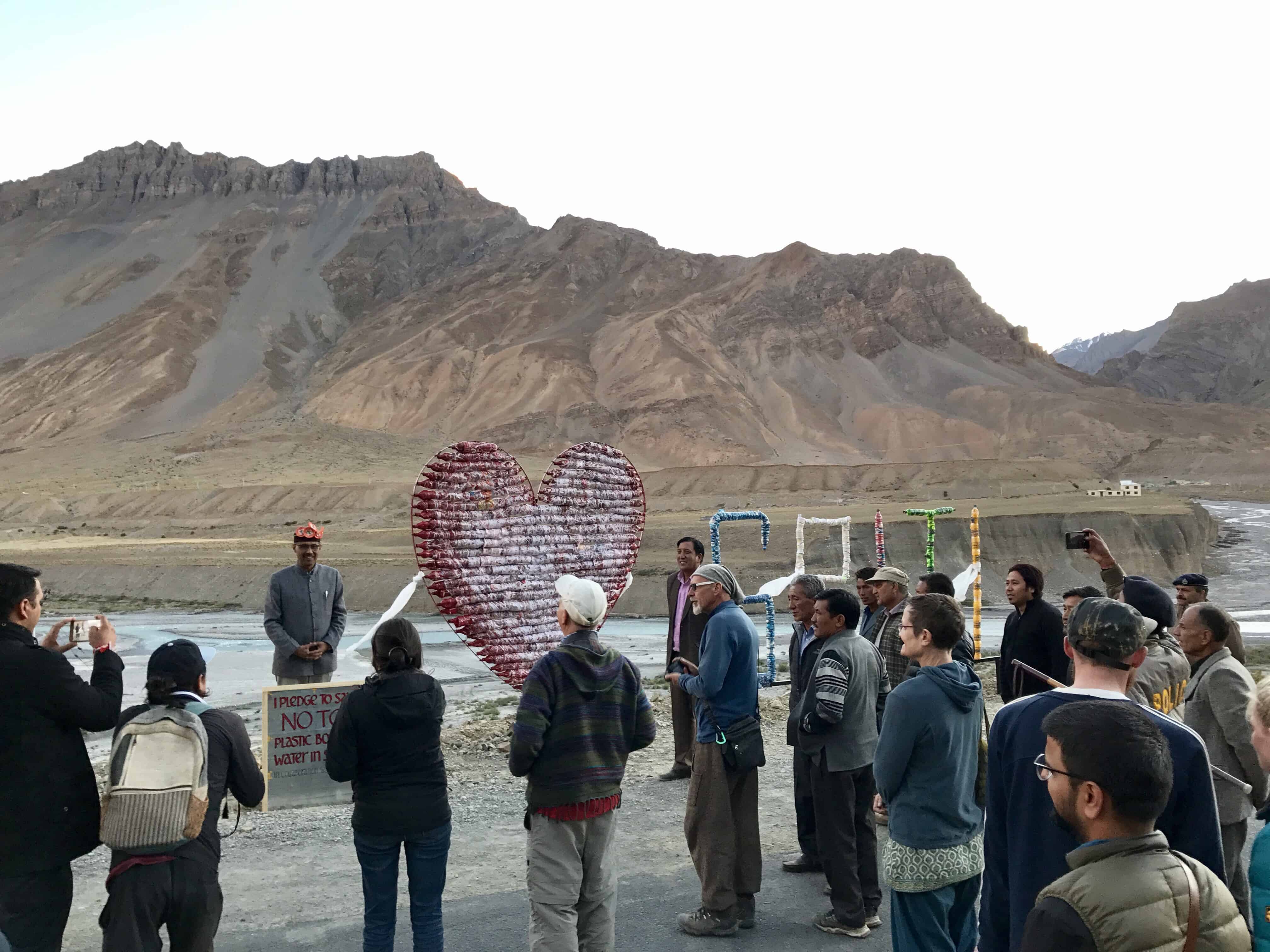
Even though our shitty internet connection in Spiti didn’t let us post on Instagram in real time, we were really grateful for the support of fellow Instagrammers who had travelled to Spiti in the past, and supported our campaign real-time with #IloveSpiti.
Also read: The Legend of the Moving Monasteries in Spiti
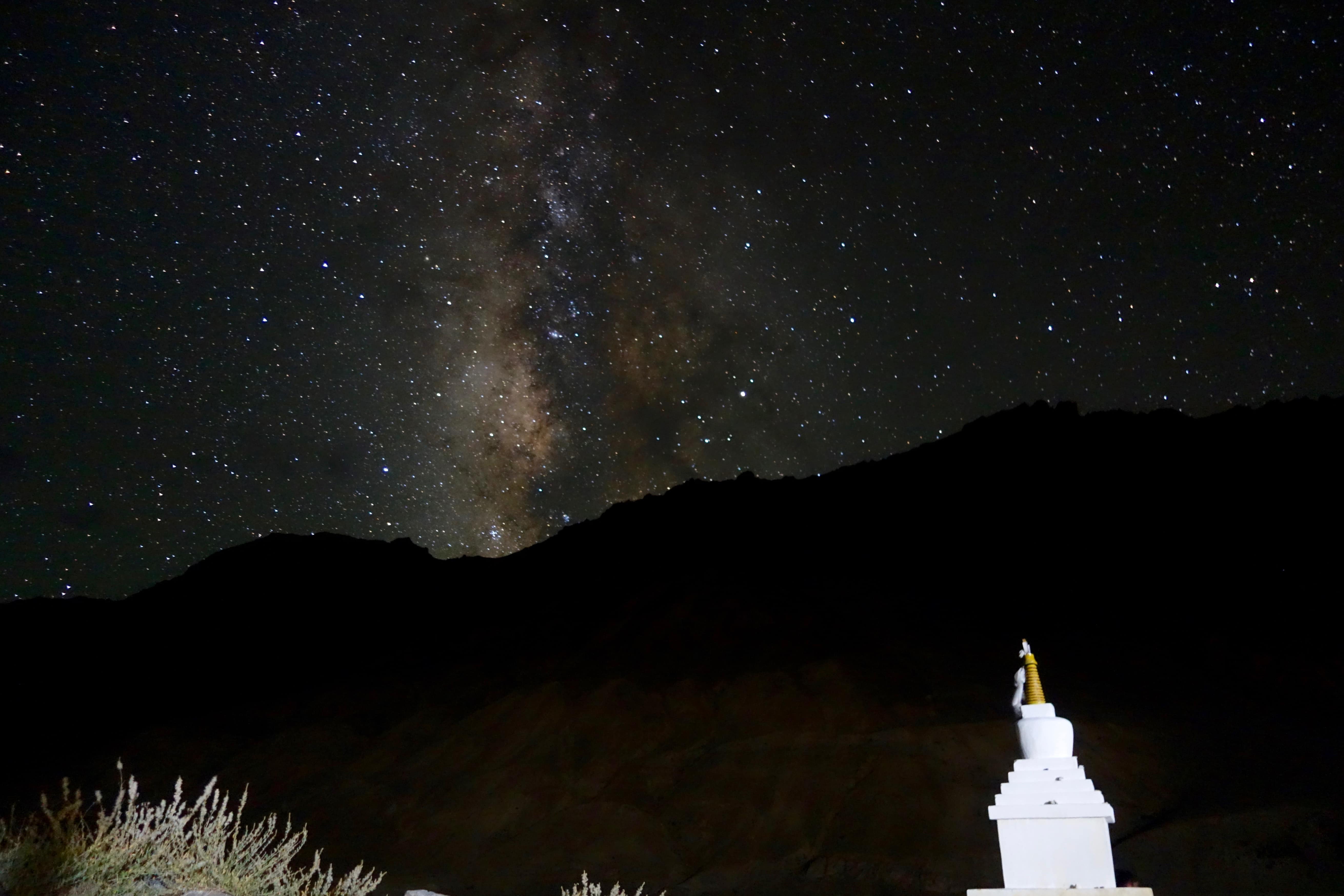
How you can help as a traveller visiting Spiti Valley
- Take a photo with the installation and pledge to say NO to plastic bottled water in Spiti. Save the Spiti refill points map at the end of this post to figure out where you can refill water. Most homestays in the upper villages of Spiti also have water filters.
- Before you book your tour, hotel, homestay or guesthouse in Spiti, ask in what ways they contribute to environmental conservation in Spiti. The best way to make businesses care is to demand it as their potential customers.
- Volunteer with Spiti Ecosphere – in Spiti or virtually – to take this project to the next level.
- Carry your non-biodegradable waste back from Spiti, and dispose it in a big city where some form of waste management or recycling is in place. For me, doing this puts in perspective how much plastic waste I generate, and inspires me to consume less plastic-wrapped junk food!
- Encourage your fellow travellers to do all of the above.
Also read: What India (and the World) Can Learn from Sustainable Tourism in Kerala
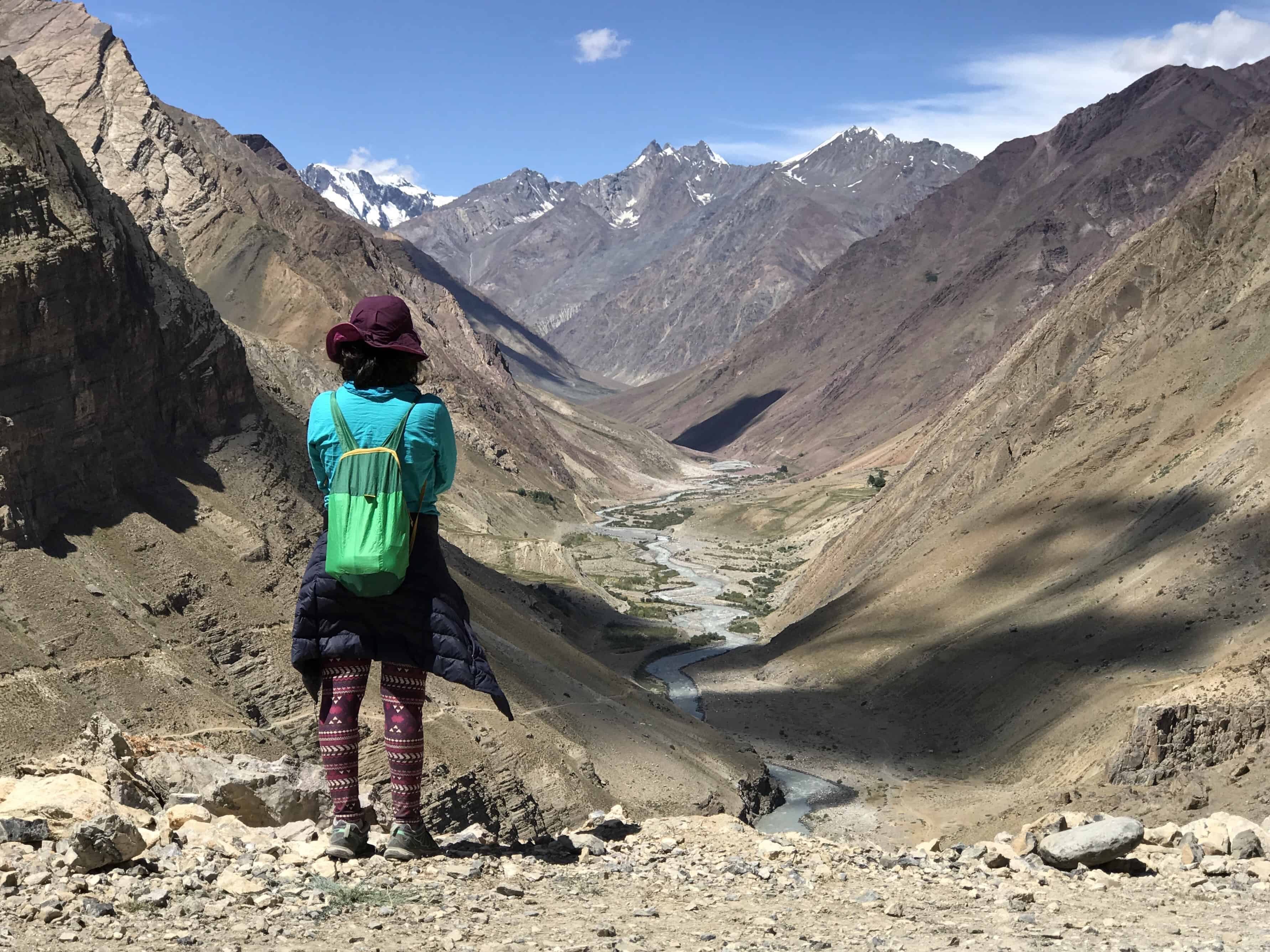
I’m hardly an optimist, but even as we overcame apathy from locals, travellers and commercial establishments in Spiti and faced some setbacks, I still felt like everything we do as individuals counts.
Every less plastic bottle used and disposed counts. Every voice discouraging their usage counts. Every blog post that urges travellers to switch to eco-friendly alternatives counts. Every responsible travel choice counts.
Also read: Inspiring Women I Met in Bhutan and What Happiness Means to Them
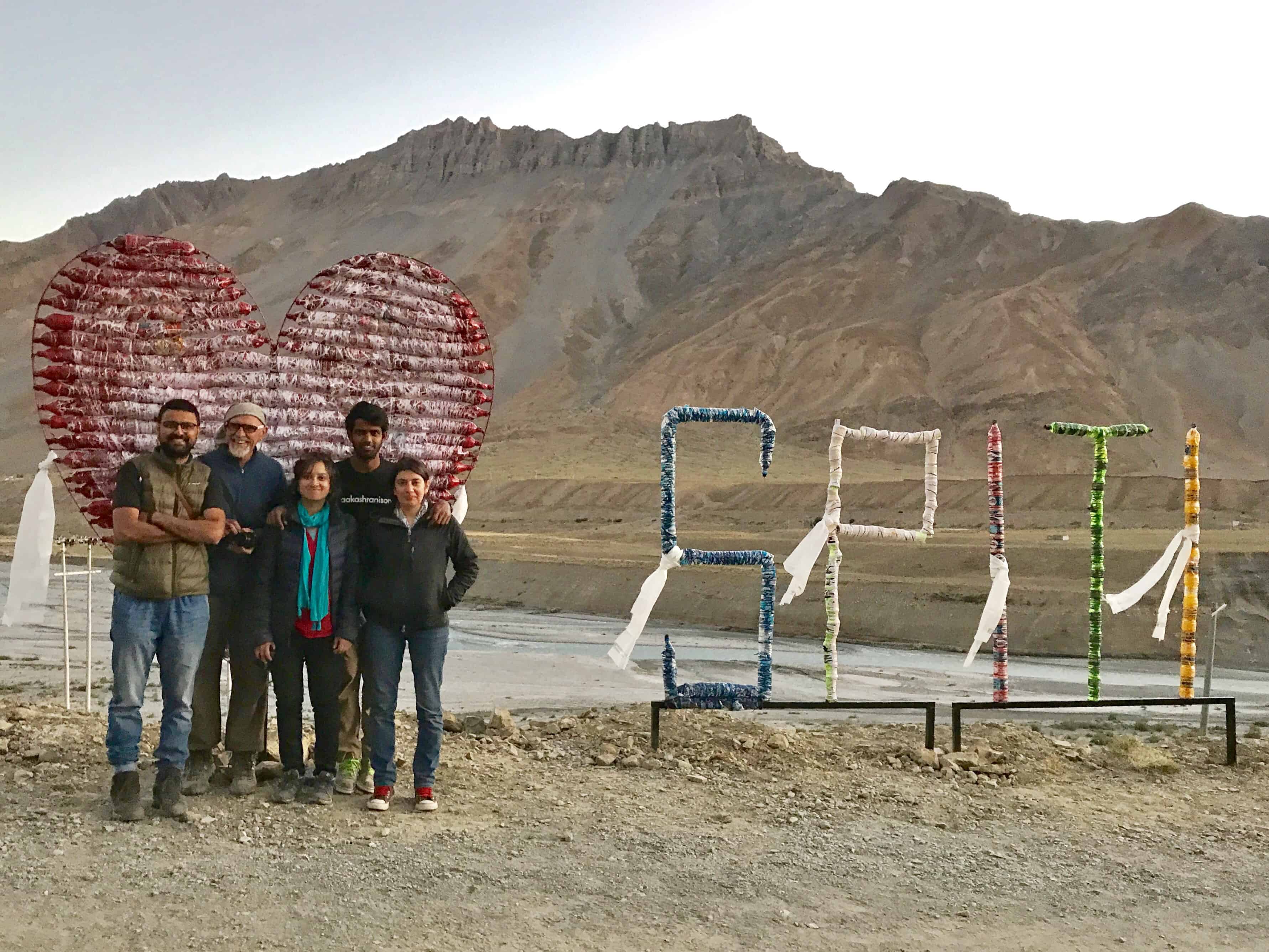
2018 Update: LifeStraw supports the I Love Spiti campaign
The “I Love Spiti” campaign has been featured on Hindustan Times, The Better India and Scoopwhoop. And LifeStraw has come on board to sponsor community filters at four public refill points across Spiti!
2019 Update: Public refill points across Spiti Valley
Delighted to share that there are now 4 public water refill points across Spiti, equipped with LifeStraw Community Filters sponsored by LifeStraw.
If you’re travelling to Spiti Valley, please remember to carry your own refillable water bottle (I recommend a steel bottle or LifeStraw bottle with inbuilt filter). Refill your bottle with safe drinking water at the following places:
- Kaza: Taste of Spiti and Sol Cafe
- Kee: Kee Monastery
- Komic: Spiti Organic Kitchen
- Dhankar: Dhankar Monastery
- Most family-run homestays across Spiti are also equipped with water filters
Also read: Zero Waste Stores in India to Cut Your Plastic Footprint



Do you use plastic bottled water when you travel? What alternatives have you found? Any bright ideas to take the “I Love Spiti” campaign to the next level?
If you have interesting ideas for environment-focussed travel campaigns, drop me a note!
Also read:
Why long term travel is more like real life and less like Instagram
How responsible tourism in India can challenge patriarchy
Sarmoli, Uttarakhand: A Himalayan village where locals run marathons and their own Instagram channel

Hi there! I’m Shivya, and I started this travel blog back in 2011, when travel wasn’t trendy, Instagram didn’t exist and AI wasn’t a thing (simpler times, I know!). I write about slow, meaningful and conscious travel – that is good for us, the places we visit, the people we meet along the way, and the planet at large. Settle down, grab a cup of tea, and read stories that remind you of the essence of travel. I’m so glad you found me!


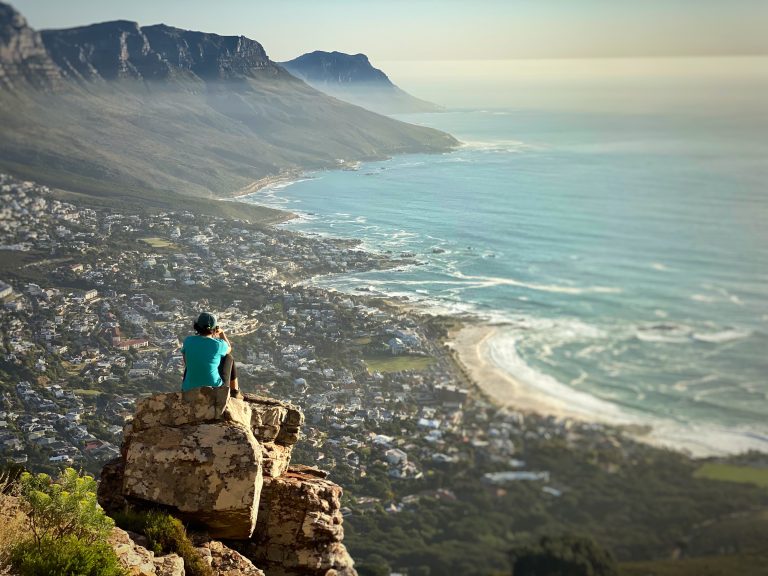
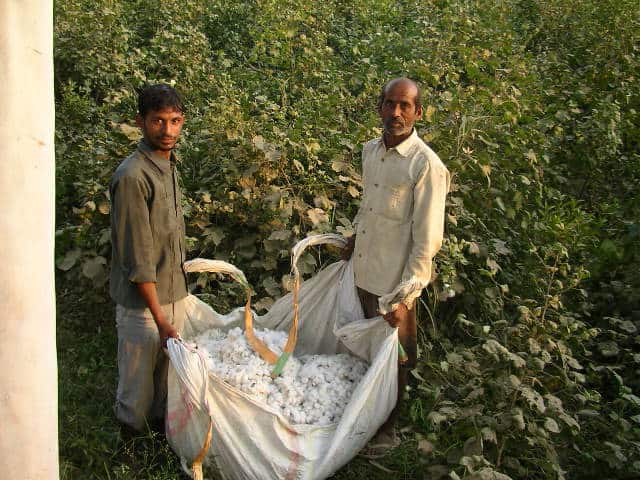
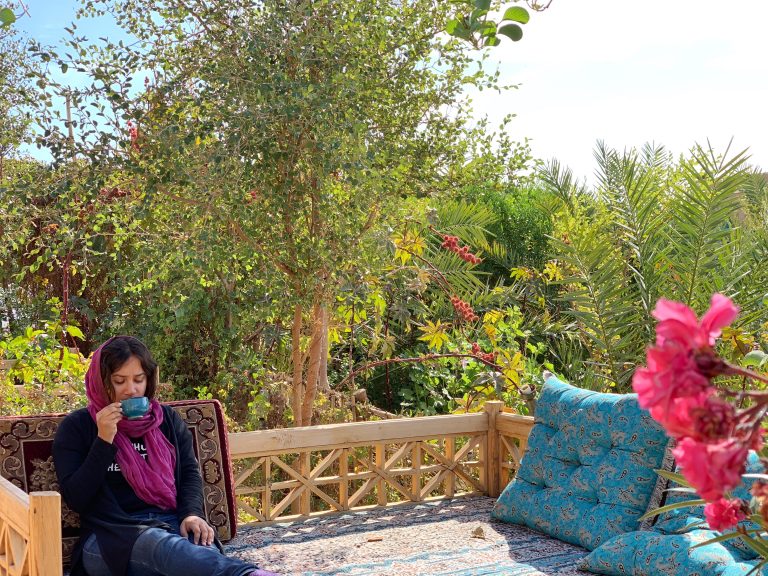
Hey Shivya,
I would like to take some time out and let you know that you have been an inspiration for me, giving me a hope and dream that you can achieve whatever you wish in a domain like travel and adventure. I’ve been an immense follower of your website as well as your Instagram account. I love this initiative “I LOVE SPITI”, even though I’ve never been there. But imagining the fate of such a beautiful place brings tears in my eyes. I would share this post and the thought that you have inculcated through this post to the maximum. And I also have some eco-friendly thoughts about using carrying water while traveling which I will shortly send you.
Thank you so much once again, for being a role model to folks like me who intend to make a life out of travel. Thank you for being my Chris McCandless.
Great to read your post. #ILoveSpiti great initiative.
Thanks for the post.
Oh my gosh. I’ll have to add this place to my bucket list too. Thanks so much for sharing. I really enjoyed reading it and all your posts. Have a great day!!!
These are things that people just don’t think about. Thank you and good wishes for your efforts.
What a wonderful initiative. Thanks to you and others for taking on such important work in this beautiful place (which I would love to visit). I have witnessed the plastic bottle problem many times in my travels. I particularly remember scuba diving in northern Sulawesi, Indonesia and seeing all the plastic bottles bobbing in the beautiful water…very sad. I always carry my own water bottle and refill it when travelling in North America, Europe, and other places with safe drinking water. I try my best in places with poor tap water by filling from clean sources in hotels or boiling water and letting it cool, but I must admit that I do succumb to plastic bottles for convenience (and of course for the locals it is even more difficult). You are right though that every less plastic bottle used counts. Thank you for the “how you can help” tips, many of which apply to travel in general.
What a brilliant post!
I love the look of Spiti so I hope I can visit one day. For now, i am just really happy you are doing such good work to keep it beautiful!!
What a brilliant initiative Shivya. Well done by you and your team! I have never visited Spiti but hearing your story made me sad, it is heart breaking when places special to you change for the worse.
Plastic is such a menace and while travelling (and in daily life) I endeavour to reduce or reuse plastic as much as possible. When it comes to water, I still depend on plastic bottles but instead of buying water, I carry empty plastic bottles in planes and then fill them with tap water daily while moving about at the destination. I have probably had to purchase water twice in the 4 or 5 times I have travelled this year. We all need to do our bit to preserve the places we so love to visit and your post is an inspiration to do more than just a bit. Cheers!
What a great initiative! I just hope people get the message that you want to deliver, not only for Spiti but for other places too in India.
A sad state worldwide. I first visited Tamil Nadu decades back without seeing any garbage. On a recent trip, I couldn’t get away from the ugly sight.
Excellent post! God bless you all! 😇🙏💯
Shivya! I love what you guys have been doing! I think another important project to start would be to find out any future construction projects and collaborate with them to make their new buildings out of the plastic bottles! I know it may sound insane if you have never heard of this but it is an initiative that has slowly been growing in many different places, mainly in Africa, central and South America. They can be made to be fireproof, earthquake resistant and even bulletproof!
gr8 post and pics Shivya. ty Greg
On Wed, Sep 20, 2017 at 9:10 PM, The Shooting Star wrote:
> Shivya Nath posted: “Six years ago, I set out on my first solo trip in > India. The destination was a barren, high altitude mountain desert in the > Trans-Himalayas, and my mission was to volunteer and learn about > sustainable tourism. That trip changed my life. One week aft” >
Great initiative Shivya and loud applause for your effort and hardwork. You always stand out in the crowd :).
Its not only the case of Spiti, but all unexplored destinations in rural India is facing the same challenge. I feel it is better not to disclose the exact location of such places when we visit there, though it sounds impractical in this age of multimedia convergence. Travellers have done enough damage exposing virgin landscapes to mass tourism. At least by volunteering such initiatives they can repay for the damage they have done. All the best and keep posting such inspiring stories.
Wonderful efforts Shivya! However I’d highlight another issue as well. This is exactly what over advertising of travel does. Locations which are pristine are highlighted by travelers via social media, now more people travel to those very places and they are no longer pristine any more. Travel does bring in revenue to these places, but at what cost? What are we leaving to our future generations? These areas are extremely fragile to handle mass tourism. We are all guilty of it and I wish you all the best in all your endeavors and travels!
I agree with this. More than relaxing and enjoying the beauty, a lot of people have started to report about the places. That has resulted in much more garbage..
Nice Post thanks for sharing.
Wonderful initiative, Shivya! Thank you for doing this..
The place I stayed at in Lake Atitlan was a eco-farm and they used stuffed plastic bottles as bricks for construction and building furniture.
It feels great reading ur articles. Feels like we are physically present at the place. Magic of ur words…inspired.
Wonderful job. I appreciate your efforts.
Shivya
Inspiring and engaging. And so so needed everywhere we go. You are right- we need to actively save what we love and our mountains are especially dear.
Will share and hope we can all make the small differences which will add up to a big difference.
That brought tears of joy. So many lovely people doing lovely things on our lovely planet! Thank You SOOOO much for sharing!!! 🙂
Wonderful efforts Shivya! However I’d highlight another issue as well. This is exactly what over advertising of travel does. Locations which are pristine are highlighted by travelers via social media, now more people travel to those very places and they are no longer pristine any more.
Great post,great initiative.
Hi Shivya! It is always so heart-warming to read about your travels. 🙂
I want to travel to Europe next year, not really solo but with a small unknown group of other people my age. Do you know of any organisation that does that? I have a slight feeling ‘all by myself’ is a little too much to start with, for me.
Any help will be appreciated!
Best Kavya
On 20 September 2017 at 16:40, The Shooting Star wrote:
> Shivya Nath posted: “Six years ago, I set out on my first solo trip in > India. The destination was a barren, high altitude mountain desert in the > Trans-Himalayas, and my mission was to volunteer and learn about > sustainable tourism. That trip changed my life. One week aft” >
Spent a month with Snow Leopard Conservation Society in Ladakh. I was saddened looking at the amount of plastic bottle consumption that is happening at touristy spots.
Hi Shivya
Thank you for this post. It’s an inspirational read, so much so that you’ll find a link to it on my blog this weekend. I hope you don’t mind!
Steve H
This post was just way too beautiful, while reading felt like i am part of the story.
#ilovespiti
Thanks for sharing this and keep going. 🙂
Thanks for sharing your inspiring story about your efforts to clean up the garbage. What my husband and I do, and have always done, is carry our bike bottles wherever we go including when we are not bicycling.
I have never been to spiti but whenever i travel i take one bottle from home and refill it again and again and take that bottle to home again ! In India tourists and travellers are two different kinds of people – Tourists are the one who litters the most and i have been in arguments with them during train, bus journey and even at places ! I have visited Goa in 2016 and seen many people throwing water bottles outside from the bus and that was the common sight there ! Disgusting !